Pernille Ripp's Blog, page 49
November 1, 2016
A Quiet Moment
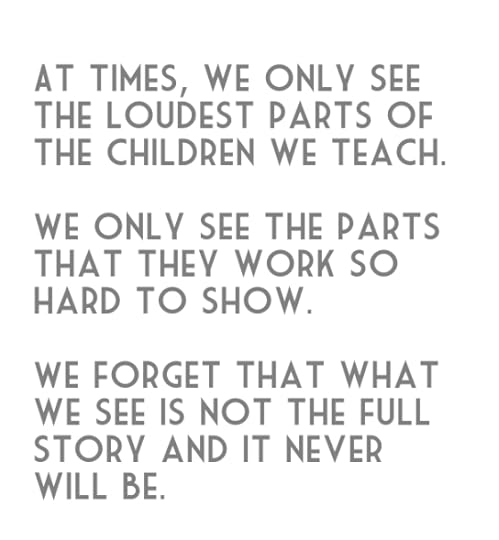
Life is full right now. Full of so many wonderful things. Full of so many privileges, but also challenges, things that will make me grow as a person, as a teacher, as a human being trying to be a better human being. One of my privileges is to get to teach a class with some pretty incredible kids in it. They are bouncy, creative, loud at times. Sometimes they need reeling in that can take more than few minutes and yet every day as they walk out, although I am a little bit tired, I cannot wait for them to come back.
Today, the day after Halloween, I did not know what to expect. After all, one child had declared to me the day before that really all school should just be cancelled the week of Halloween. As a mother witnessing my own children’s lethargy this morning, I had to wonder what the day would bring. Would these boys even be ready for anything? Would it be a day of wasted time? As the day grew on and the kids seemed to wake up from their tiredness, I started to ponder just how loud the end of the day would be? Where would the crescendo hit?
The bell rang, the kids arrived and we settled in as we so often do around our table, ready to do something together. I pulled out my Demonstration Notebook (thank you Kate and Maggie Roberts for this idea). I had the lesson ready on how to stretch out theme, for the kids to try so we did what we do so many times in a week. We read a picture book.
Yet this time, when I chose it I knew I needed a powerful punch. I knew that if I were to counteract the craziness of the day after Halloween then it would have to be an extraordinary book, so I read aloud the picture book Ida, Always. This book with its happy polar bears on the cover is one of the best I have read this year. It also happens to have an easily identifiable theme. As I read the book, my emotions got the better of me. You see, my middle daughter’s name is Ida as well. She is four. She is not a polar bear, nor is she sick, and yet, every time I read this picture book, I cry. And not just misty-eyed maybe there are tears in there but still turning pages, no, tears down my cheeks, having to stop the read aloud. I thought I could make it today, after all, how often do you cry in front of your student. I thought wrong. At first, the boys clearly did not know what to think of their otherwise happy teacher sitting there with tears. And yet as they starred in silence, I started to see their own eyes and the tears that were forming there.
These kids. These wonderfully rambunctious kids. These kids that sometimes make me feel like I am not doing enough and will never be enough. They cried too. Not all, but some. They sat there in solidarity with me. They asked why this book was so emotional for me. And as I explained they all nodded, they got it. One kid took the book from me and continued to read aloud.
As the book ended, we discussed why sad books are okay at times. No one laughed. No one pointed a finger. No one called each other a name. Instead we just shared the moment, shared this vulnerable moment and then went on with our lesson.
At times, we only see the loudest parts of the children we teach. We only see the parts that they work so hard to show. We forget that what we see is not the full story and it never will be.
In our moment today I was reminded not just of the power of picture books, but of the power of vulnerability in our classrooms. How for students to dare to share who they are as human beings, we must also show ourselves. Even if that means stopping our read aloud because we cannot form the words.
I don’t know if we will ever cry together again over the fate of a polar bear, but it doesn’t really matter, because today we did, and today we grew. Not further apart but closer together. Sometimes those moments come right at the very right time. Sometimes they come when we least expect them.
I am currently working on a new literacy book. The book, which I am still writing, is tentatively Passionate Readers and will be published in the summer of 2017 by Routledge. I also have a new book coming out January, 2017 called Reimagining Literacy Through Global Collaboration, a how-to guide for those who would like infuse global collaboration into their curriculum. So until then if you like what you read here, consider reading my book Passionate Learners – How to Engage and Empower Your Students. Also, if you are wondering where I will be in the coming year or would like to have me speak, please see this page.
Filed under: Be the change, being a teacher, Reading


October 28, 2016
More Picture Books to Spark Empathy
Last year I published a post on 10 picture books that spark empathy. It turns there are many more than the original 10 highlighted. With the world we live in, we all need a little more empathy in our lives and in our classrooms. Picture books offer us a way to start the conversations and to plant the seeds. So today I offer you an updated list, the original 10 can still be found toward the bottom. Remember; picture books are for all ages and the power of these cannot be disputed.
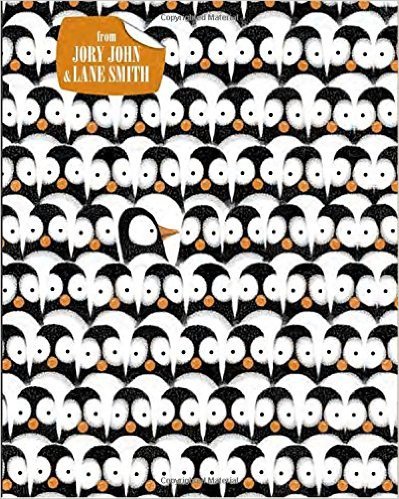
Penguin Problems by Jory John and Lane Smith follows a little penguin that just wants to be understood. He doesn’t want to follow the crowd of the other penguins and in fact, constantly complains, until someone puts things into perspective for him.
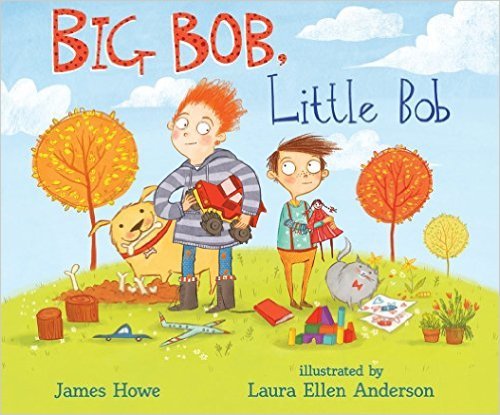
Big Bob, Little Bob by James Howe and Laura Ellen Anderson is a great stry of what happens when a new boy moves into the neighborhood and doesn’t quite understand the boy who shares his name.
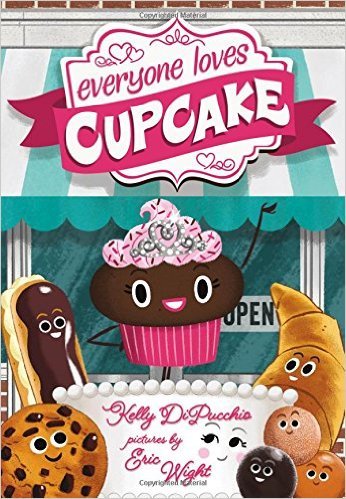
Everyone Loves Cupcake by Kelly DiPucchio and Eric Wight is the story of Cupcake who just wants to be perfect. Yet being perfect is exhausting. Will her friends accept her for who she is?
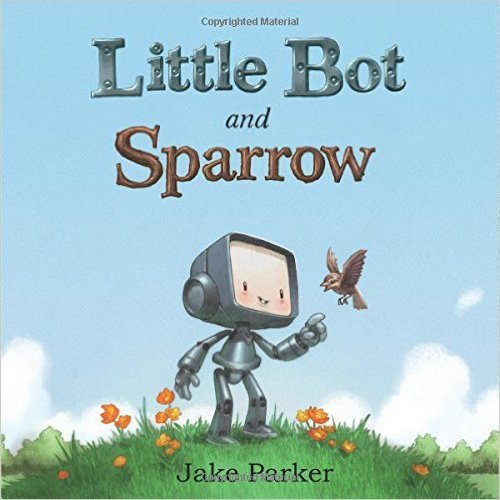
Little Bot and Sparrow by Jape Parker follows Robot in his quest forfriendship after being discarded as old. What a great tale of how we do not have to be the same to be friends.
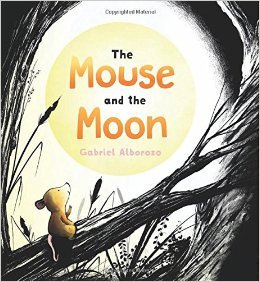
The Mouse and the Moon by Gabriel Alborozo follows Mouse who is very lonely. One day he starts to speak to the Moon and makes a surprise friend in the process.

Samson in the Snow by Phillip C. Stead follows a woolly mammoth after his chance encounter with a little bird. Even though they are so different, Samson cannot stop worrying about the bird when a snowstorm hits and he sets out to find him.
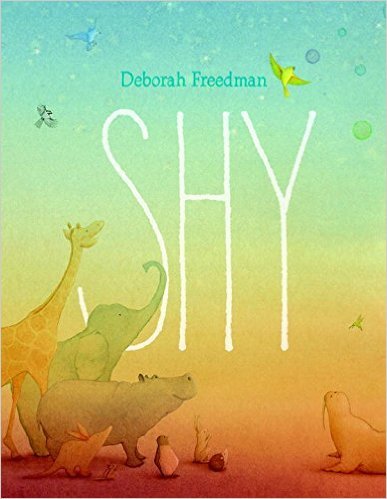
For all the kids who identify as being extremely shy, Shy by Deborah Freedman is a beautiful tale of finding a friend and finding courage.
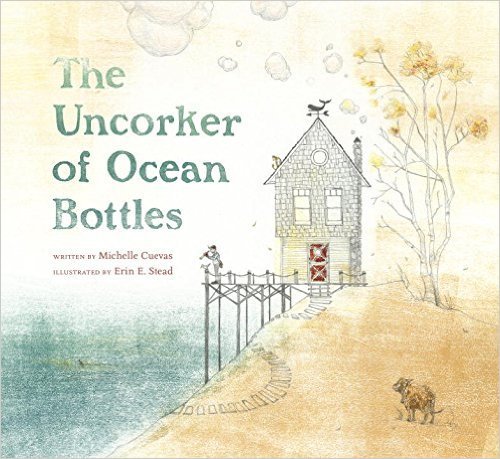
The Uncorker of Ocean Bottles by Michelle Cuevas and Erin E. Stead is a tale that speaks of loneliness, of taking a chance, and of finding your place. How many of us cannot relate to the feeling of being lonely?
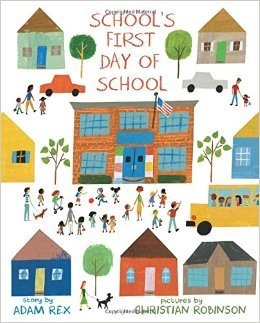
School’s First Day of School by Adam Rex and Christian Robinson is all about a school and how nervous it is before the kids show up. What a great way to discuss how we can make newcomers feel welcome.
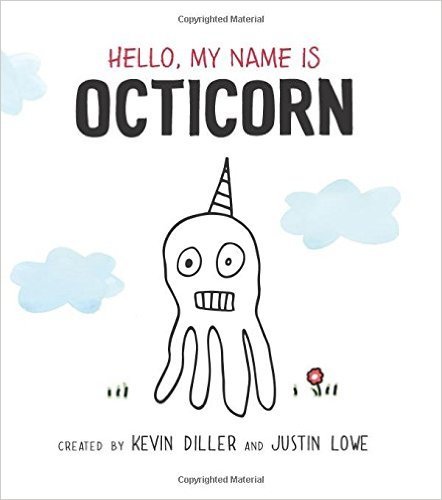
Hello, My Name is Octicorn by Kevin Diller and Justin Lowe who feels just a little bit different. So is being different a good thing or a bad thing?
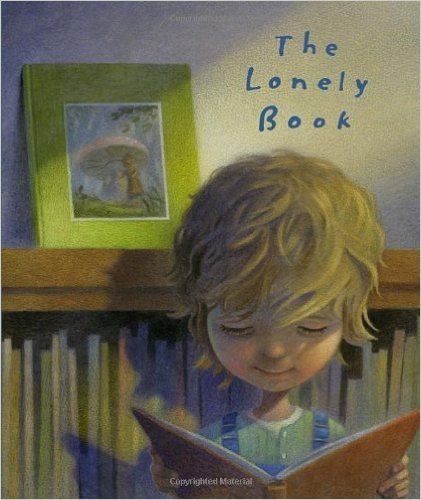
The Lonely Book by Kate Bernheimer and Chris Sheban talks about loneliness as well. When a new book no longer is new, who will read it any more? Great way to use metaphors to get kids to talk about being lonely.
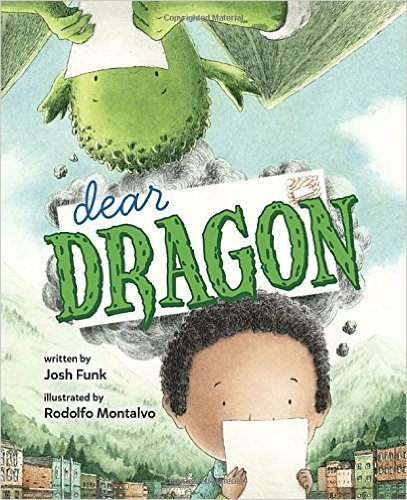
Dear Dragon by Josh Funk and Rodolfo Montalvo speaks of an unlikely friendship between two different species. It begs the question; must we be the same to be friends?
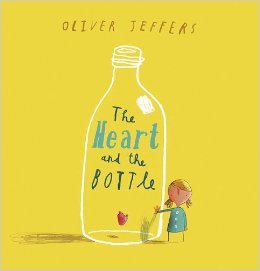
The Heart and the Bottle by Oliver Jeffers is about grief and locking your heart up when it is too hard to have it vulnerable. Yet is that really the way to experience life?
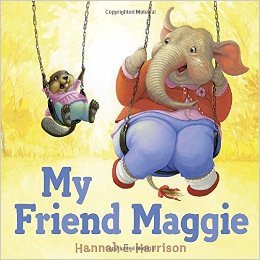
My Friend Maggie by Hannah E. Harrison is a favorite of mine for many reasons. It is such a stellar book for talking about what being true friends really means and how we can stand up for the people we care about.
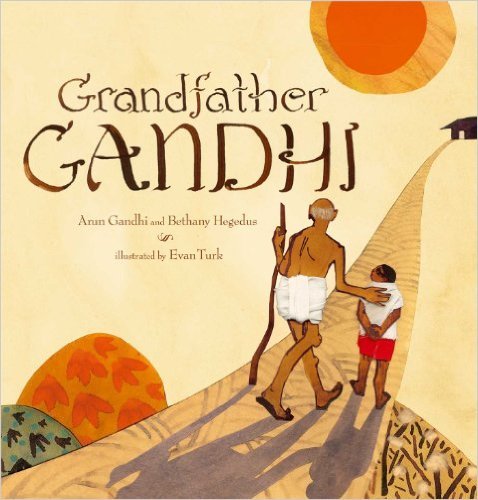
Grandfather Gandhi by Ann Gandhi, Bethany Hegedus and Evan Turk takes the teachings of Gandhi and makes them kid friendly. In this book the message is how to turn moments of darkness into light instead.
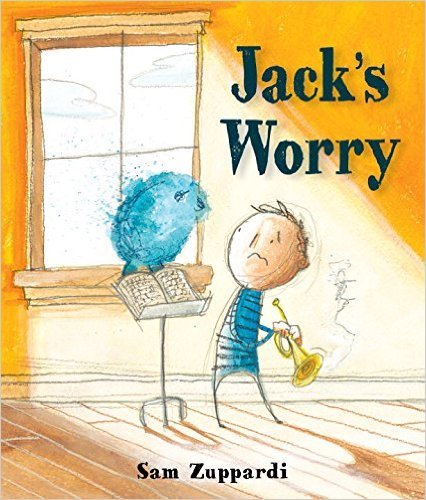
Jack’s Worry by Sam Zuppardi is a fantastic book to start discussion of anxiety and worry. With anxiety on the rise in our classrooms, this book is one that many kids (and adults) can relate to.

Be A Friend by Salina Yoon is the story of Dennis and how he does not find a friend who accepts him for who he is until he meet Joy. I love the message of how being different does not mean you have to change to find a friend.
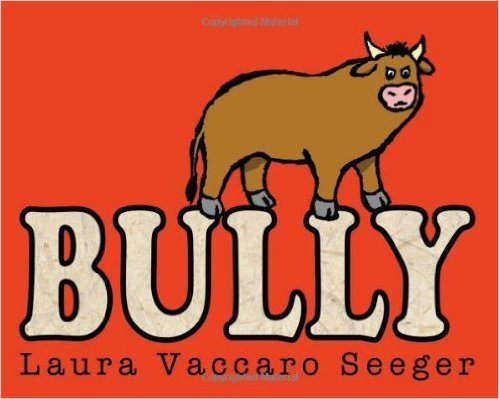
Bully by Laura Vaccaro Seeger is a fantastic illustration of what happens when we bully. This is a book that is sure to spark discussion no matter the age group.
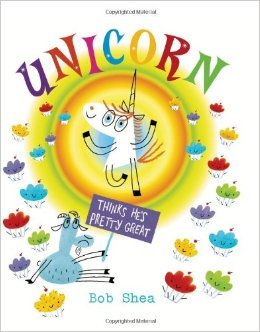
Unicorn Thinks He’s Pretty Great by Bob Shea is a must-add to any picture book collection. The tale of Goat and how he thinks Unicorn is a braggart until he finally gets to know him is one that kids will love.
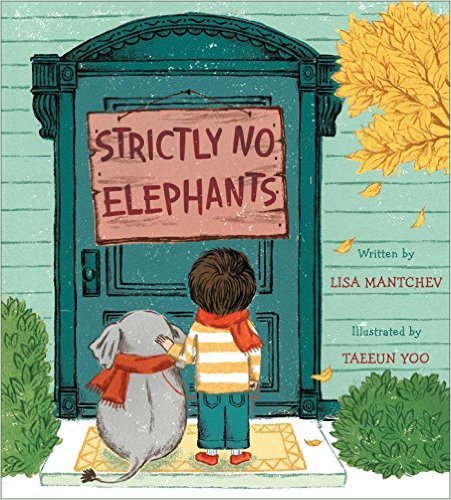
Strictly No Elephants by Lisa Mantchev and Taeeun Yoo is one that I think many kids can relate to. With the story of a child who is excluded and how he finds his own group, we can use this to open up discussion about accepting others.

Better than You by Trudy Ludwig is the story of the friend that brags all of the time, in the process putting his neighbor Tyler down. It explores friendship dynamics and how we can make each other feel bad or good.
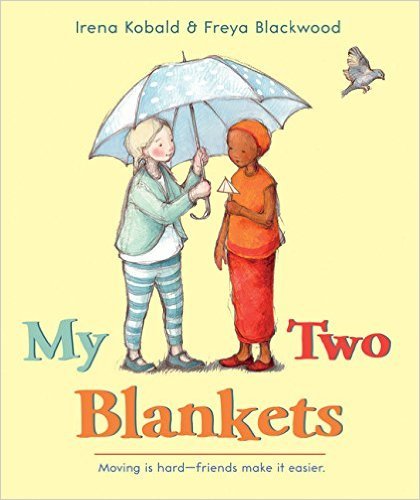
My Two Blankets by Irena Kobald and Freya Blackwood speaks to how hard moving is, but also about finding a new friend.
The Original Ten:
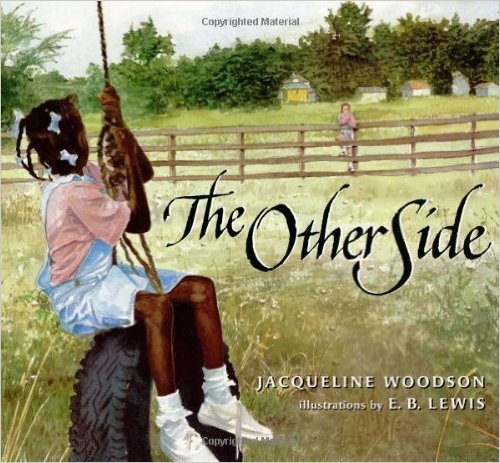
I have long loved The Other Side by Jacqueline Woodson for its straightforward story of two girls living on either side of a fence and yet many miles apart. For some of my students this is territory they have not gone into yet, so the conversations about race, our history, and even what is happening now in our world abound.
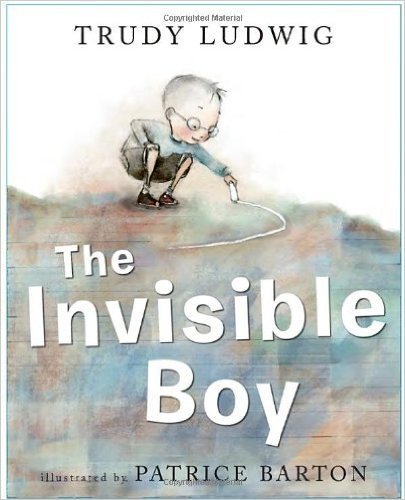
I don’t remember how I came upon The Invisible Boy by Trudy Ludwig. My guess is that someone shared it on their blog, so thank you to them. This story so beautifully encapsulates what it means to feel invisible and every time I have used it with students it has led to deep conversations. We read this more than once so we can pay attention to the illustrations as well.
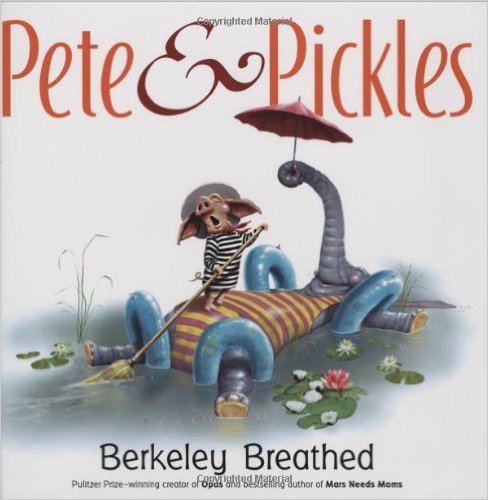
Students immediately fall in love with Pete & Pickles by Berkeley Breathed for the illustrations but then come back again and again for the story of an unlikely friendship between a pig and an elephant. This is a must read aloud at any age. (ANd truly they all are).
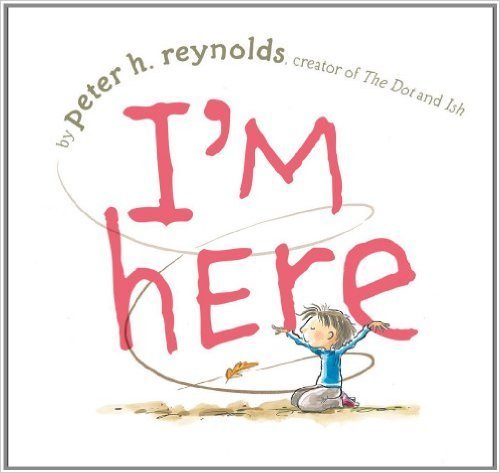
It has been established already that Peter H. Reynolds is a creative genius. I have loved all of his books since the first time I read them. This book, I’m Here, is one that doesn’t get a lot of attention standing next to The Creatrilogy, but it should. It’s eloquent story about a boy who feels so all alone is one that will settle into the hearts of students.
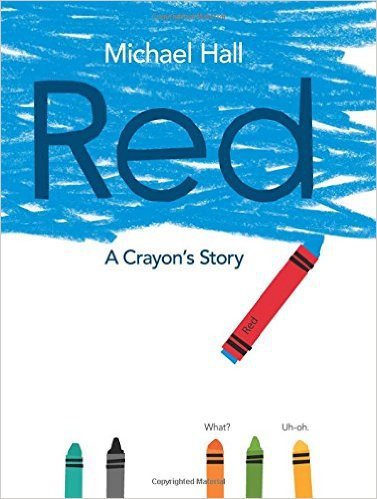
Thea, my kindergartner, came home and told me that I had to get this book about a big red crayon. Okay…. I thought. But she was right, Red – A Crayon’s Story by Michael Hall was one that I had to read aloud to my 7th graders. And then we had to discuss what it meant staying true to one’s own nature as well as facing the pressures of others. I swear this book was written for middle schoolers and not young children secretly.
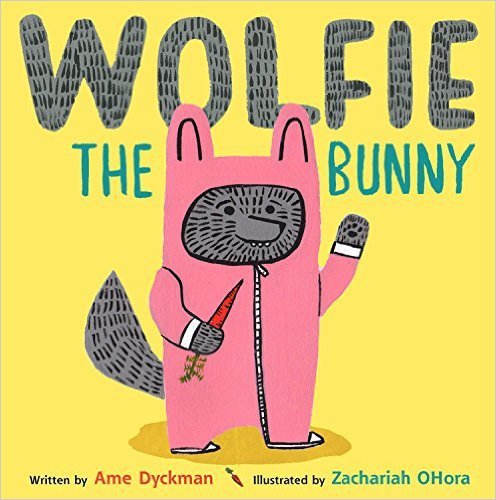
It is a celebration in my life whenever the talented Ame Dyckman comes out with a new picture book and Wolfie the Bunny was definitely a cause for celebration. This book about assumptions and what they can lead to has not only made my students laugh outloud, but more importantly, has led us to question our own assumptions about others.
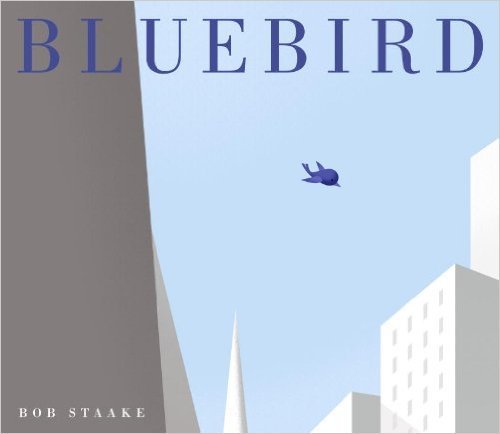
I have Bluebird by Bob Staake on many favorite picture book lists, and there is a reason for that. The shock on my students faces when we get to that page. The questions, the discussion when I step out of the way are priceless. This is a wordless picture book which also means that my students love interpreting the ending.
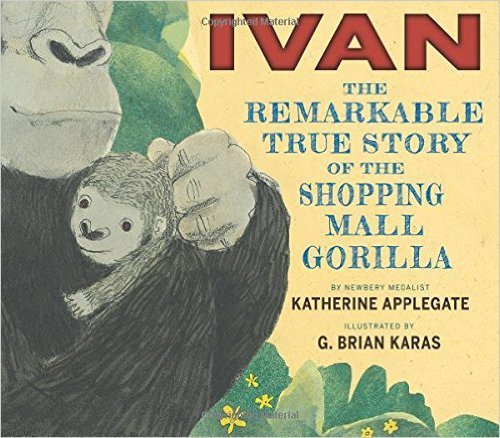
I cried when I read aloud The One and Only Ivan so it only seems fitting that I cried when I read out loud Ivan: The Remarkable True Story of the Shopping Mall Gorilla by Katherine Applegate. My students love to ask questions after this book, they love to talk about their own animals, what they would do to save others.
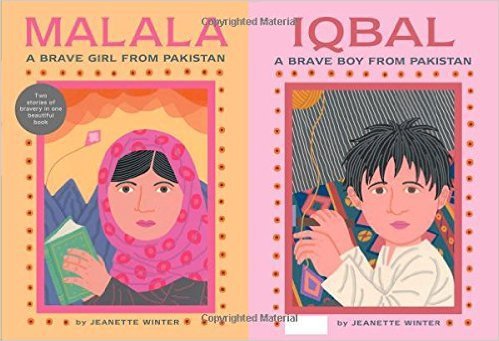
I read this book out loud to all 5 of my 7th grade classrooms. It was astounding how similar the reaction was; disbelief, outrage, questions and perhaps a tear or two shed by me. This story Malala, A Brave Girl from Pakistan/Iqbal, A Brave Boy from Pakistan by Jeanette Winter is one that will stay with you for a long time. This is sure to elicit conversations and calls for action.
I always seem to cheat on these posts and never stick to just 10, so for my 10th pick I will give you several instead. All of these are worthy of being read aloud and discussed. We need more empathy in this world, I am so glad these authors give us a chance to do just that.
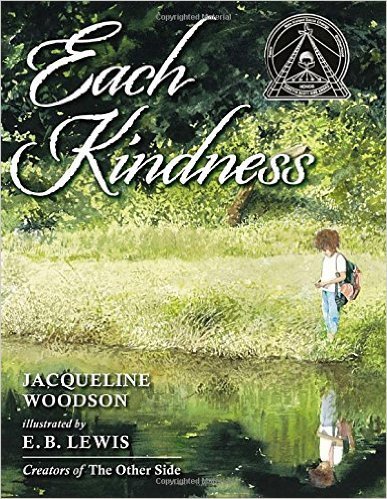
Each Kindness by Jacqueline Woodson

The Name Jar by Yanksook Choi (Having a name that no one pronounces correctly in the USA really makes me love this book even more).



Chrysanthemum by Kevin Henkes.
Which ones would you add to the list?
Filed under: being a teacher, Reading


October 25, 2016
Planting a Seed – Our Project on the Refugee Crisis
I grew up in a home that had a newspaper on our table every morning. Laid out for us kids to see, we grabbed the comics first, then the Danish news. I was a teen when I started reading the international news. Being aware of the world was something that was expected of us, after all, Denmark is a small nation. We read the paper, we listened to the radio, we watched the news. Not always fully attuned but always aware of at least some of the bigger things happening in the world beyond our own.
Being a globally aware and invested teacher is something I have tried to live and breathe for many years now. After all, the Global Read Aloud was created with the idea of making the world not only smaller, but also more interconnected to create more empathy and kindness. My students have therefore in varying degrees always brought the world in, been a part of projects that involved others and tried to know more about the outside world than when they came in. Working on a team with an incredible geography teacher has only made my job easier.
So this year as my English standards starred me in the face a small idea started to form, a seed began to grow; what if instead of “just” doing summaries, what if instead of “just” having an opinion, I was able to structure an inquiry project into something that I have been following myself; the Refugee Crisis? What if we created a two-week experience where the students got to learn at their own pace with the end goal of having an opinion? With that, I started to plan…
We would have two weeks roughly of work time, with time dedicated every single day after we do our 10 minutes of independent reading. Students could choose how they wanted to work and engage with the materials. I used a sheet that simply asked kids how they would like to engage with the learning and then crafted lessons based on this. I have used this approach in the past and it has worked pretty well, this time I should have been more diligent with using it though after the kids filled it out. However, that being said, kids were also good at reaching out and asking questions, as well as use each other for help. I did promise the students that I would only do one whole class lesson; how to write an opinion piece using the MEL-Con format, and I kept my word. My students have asked me to do less whole class teaching and I am adhering to that as I can help them better in small groups anyway.

Our anchor chart for the MEL-Con format
We first needed a question, one that would give us a focal point but would not be shaped or tainted by my opinion, after all, I did want the students to come to their own conclusion. So our guiding question became ; What should America’s role be in the refugee crisis? This was what the students would work toward and discuss.

We created a running word wall as student questions came up.
I knew I needed texts to start with; thank you Newsela for your text-sets, you saved me so much time. So I pulled nine different texts that highlighted different aspects of the crisis, printed them at three different reading levels and told the students to choose three of them to read at least. I also made all of the texts available as a folder in case they lost their copies.

Another teaching tool for students to reference
I also wanted students to watch videos; I created a padlet with different short videos that would be appropriate for 7th graders and also less than 20 minutes. Students were asked to watch at least one, but could do more if they wanted to.
I then crossed my fingers and asked on Twitter; would anyone Skype with my students about being a refugee? I am so grateful for the response. Three of my classes were so incredibly lucky to Skype with the incredible Rusul Alrubail,she graciously and courageously shared her story of how she became an Iraqi refugee at a young age. To say my students were moved by her story would be an understatement. Yet, the kindness of strangers continued. Another teacher, Emily Green, from Michigan asked her students, some of them refugees, if they would create a small video for my students. Last night, I received three different videos from her courageous kids sharing their stories. Today as I played them for my students, you could have heard a pin drop.

So for the past two weeks, my students have annotated the texts (using their own systems rather than ones created by me) for anything that stood out, they have written a summary on one article, and they have crafted an opinion on the guiding question, as well as craft an opinion piece based on all of their newfound knowledge.

In some classes we started in small group before we went to whole class discussion.
Today, as we came together as a group to discuss what we have learned and what our opinion is, I sat back behind the kids and watched them practice their discussion skills. As kids navigated the ins and outs of adult unmoderated conversation, I couldn’t help but feel just the tiniest bit proud. Yes, they were discussing, yes they were listening to each other, but that was not the only thing I observed. I observed kids who all of a sudden understood just how vast of a nation we live in. Kids who now know where Iraq and Syria are. Who know tales of children passing through Europe unattended as they try to reach freedom. Of people who never wanted to leave their homes but were forced too. Of what we can possibly do as a nation but how many hurdles there may be to making any decisions. I also saw kids who started to understand that for some reason they equate refugee with terrorists. Who thought 10,000 refugees is a large number but have since discovered it might not be. Who know that we need to help but are not sure just how to do that.

Discussing as a whole class
I didn’t set out to shape the opinion of my students, that is not my job as their teacher. Instead I wanted to create an opportunity for them to form an opinion on fact rather than hearsay, on research rather than rapid talk. I know that some believe America should do more and others think we do too much already. I know that for some they don’t really care either way. But I also know that by giving them more control over their learning, by giving them tools to start with, by creating a guiding questions and then by bringing others in via Skype and YouTube that we have created an experience that matters. That together we now have this piece of the world that ties us together and that will continue to crop up through the year.
Yesterday, a child asked me what the deal was with Mosul and weren’t they bombing over there? A child that two weeks before was not even sure that Iraq was a country or what refugee meant. That child had heard on the news that fighting was starting up again and now wanted to know more. As teachers of literacy we have incredible opportunities to bring the world in, to help our children find their opinions, and to create experiences that connect us with other human beings. I wrote a book on how to do just this, not for the sake of the book, but for the sake of making this world a better place.
I ended our discussion time today with the following words; “My job is not to make you think a certain way, my job is to make you think. So whatever your opinion may be, all I ask of you is to have one based on fact, rather than what others believe. Keep your ears open and ask a lot of questions. That is the least you can do as the future of this country.”
As teachers, we can bring the world in when it makes sense. To make it matter more than just getting through the year or working off our checklist. The year has just started and yet we have so much more to discover about the world. I cannot wait where our learning takes us next.
PS: If you would like to see my folder of resources, go here, some of it is loose.
I am currently working on a new literacy book. The book, which I am still writing, is tentatively Passionate Readers and will be published in the summer of 2017 by Routledge. I also have a new book coming out January, 2017 called Reimagining Literacy Through Global Collaboration, a how-to guide for those who would like infuse global collaboration into their curriculum. So until then if you like what you read here, consider reading my book Passionate Learners – How to Engage and Empower Your Students. Also, if you are wondering where I will be in the coming year or would like to have me speak, please see this page.
Filed under: Be the change, being a student, being a teacher, student choice, Student dreams, student driven, student voice


October 23, 2016
The Least We Can Do
What follows is my ITEC Ignite…
On December 19th, 2013, our youngest daughter, Augustine, was born almost 10 weeks early. She came so fast that there was no doctor in the room, just the nurse. She came so fast that I now know what the big red emergency button in a hospital room does. She came so fast that I did not see her. I did not hold her. She did not cry. For the first minute of her life, I did not know if she was alive. It wasn’t until my husband, Brandon, told me she was breathing that I think I took a breath. That life started up again because for that longest minute of my life, with no wailing to calm me down, I had no idea if I was still the mother of three or the mother of four.
They whisked her away from me into their machines, into the equipment that would help her tiny body breathe, stay warm, and her heart keep beating. See when babies are born that early they need help with everything. And we can prepare all we want but it is not until they actually arrive and we see how much they need us that we realize that all of a sudden we have started a new journey, one that will take us down a perilous path where we might not be able to see our destination for a long time.
In the week leading up to her much too soon arrival, I was in the hospital waiting. Willing my body to slow down. We were not ready. She was not ready. One night a doctor from the NICU visited me to help me prepare for what would happen in case she came. His words has stuck with me all of this time.
He said, “When she comes we will be ready. We will have the machines that will help her breathe. We will have the machines that will keep her warm. We will monitor her heart and we will be by your side. We will do everything in our power to keep her alive, to keep her safe, to help her no matter what. While we can help her with her needs, we will not know about her brain. We will not know what long term effects being born so early will have on her learning. We will not know if her brain will be damaged, we will not know until she grows, until she reaches her milestones. We will not know what her future path will look like when it comes to learning but we will be ready. We will be by her side because that is what we do.” That is what we do…
As I held Augustine for the very first time more than 24 hours later, I held all of our dreams for her as well. As we sat in the quiet, listening to the alarms and the beeps on her monitor, I knew that her future was now in my hands as well, and that all we could do now was our best. That all we could do now was to be by her side and hope that her future teachers would see her for the miracle she is and not just a child who might have difficulties learning.

Every year as the new year awaits, our students arrive in all of their glory. They arrive with all of their dreams, their hopes, and their needs. They show up whether we are ready or not. And so we prepare, we plan, we dream over the summer that this will be the year that we reach every single child we teach.
We do not pick who we teach. We do not pick who shows up. We do not pick who these kids are that we are supposed to have life-changing experiences with but instead we stand by our doors like the Statue of Liberty and say; “Give me your tired, your poor, your huddled masses yearning to breathe free …”
We can prepare all we want as teachers. We can create classrooms where most of our students will thrive. We can plan for fictitious children and hope they will fit into the boxes we create. Or we can teach the kids that come. We can create classroom experiences that center on the kids that actually show up instead of the kids we hope to teach.
We can open our classroom doors wide to make sure that every child that enters, that every child that shows up, know that with us they will learn, with us they will create, with us they will matter. Because they do. And we can ask those kids how we can be the types of teachers they need. We can ask those kids how they would like to learn and then we can listen to their truths and become the teachers they need.
So we can take them all and we can love them all because that is the least we can do. We work tirelessly every day so that those kids that become our kids know that with us they belong, that with us it does not matter what their start in life was because in here they have a chance at success. That with us it does not matter whether they were born 10 weeks early, don’t have a good home life, or have never liked school. That with us all that matters is that they showed up.
Augustine did not ask to be born early, she did not ask to have such a hard start in her life. She did not ask to have harder path than our other kids. The kids that come to us with their broken dreams and their battered hearts, didn’t ask for that either. Didn’t ask to have a different life than so many others. So our job is to teach. Is to love. Is to be by their side.

This summer, as Augustine went to her NICU check up appointment, we heard the sweetest words. “Your daughter is perfectly average…” and while her path is still unwinding and we are not in the clear just yet, we see hope with every word she learns, every task she accomplishes. We see her for the miracle she truly is, a child that would not have lived not too many years ago. So may we all see the miracle that is the child that enters our schools. May we all know just how lucky we are to teach these kids, even when our days are long and our lesson plans are broken. Even when we feel we are not enough, may we still try.
As teachers, we were never promised it would be easy. We were never promised that our jobs would be effortless. Or that our hearts would stay protected. But we were told that it would be worth it. That this may be one of the hardest jobs and yet also the most rewarding. So every day as we welcome the kids, make sure it is every child we welcome, not just the easy ones, the ones that barely need us. Make sure your classroom is a place for any child to succeed. No matter their start in life. Because much like the NICU doctor told me almost three years ago; we are ready, we are here, and we will stay here until you no longer need us. It is the very least we can do…
I am currently working on a new literacy book. The book, which I am still writing, is tentatively Passionate Readers and will be published in the summer of 2017 by Routledge. I also have a new book coming out January, 2017 called Reimagining Literacy Through Global Collaboration, a how-to guide for those who would like infuse global collaboration into their curriculum. So until then if you like what you read here, consider reading my book Passionate Learners – How to Engage and Empower Your Students. Also, if you are wondering where I will be in the coming year or would like to have me speak, please see this page.
Filed under: Be the change, being a student, being a teacher, being me, Student dreams


October 21, 2016
Keep Doing
I seem to have a theme this year in my writing. Perhaps it is my theme for the year; just keep going, just keep trying, just keep loving these kids and what you do. So often we get caught up in all of the things we cannot do yet, in all of the things we have not figured out. My own list is miles long it seems. I still have so much to get better at. I still have so many things to learn.
Yet, today, as I sat surrounded by all of our amazing seventh graders, and saw the seeds that we have planted as a team, I was reminded of one important thing. One that is easy to forget when we are surrounded by the new, by the innovative, by the flash that comes with changing. We must not forget to keep doing the good stuff. Keep doing the things that work. Keep doing the little things that make others’ days better. Keep doing the tried and true. Keep being you, or at least the version of you that works, for we all have parts of us that need to improve.
Keep an eye on the horizon as to not stand still, but don’t forget to celebrate what you already are and what you already can do. I may not be the best English teacher out there, in fact I know I am not, but there are things that I am proud of. There are things that work for us. That I will keep doing even as I change other things.
So keep doing those things that work, those things that make a difference. Even as the world spins and rally cries go out for change, don’t lose yourself in the shuffle.
I am currently working on a new literacy book. The book, which I am still writing, is tentatively Passionate Readers and will be published in the summer of 2017 by Routledge. I also have a new book coming out January, 2017 called Reimagining Literacy Through Global Collaboration, a how-to guide for those who would like infuse global collaboration into their curriculum. So until then if you like what you read here, consider reading my book Passionate Learners – How to Engage and Empower Your Students. Also, if you are wondering where I will be in the coming year or would like to have me speak, please see this page.
Filed under: being a teacher


October 16, 2016
We Are All A Work in Progress

Sometimes I am asked if other educators can come to our classroom, just to see. Just to visit, just to speak to our incredible students. Sometimes I am asked when would be a good time for such a visit. When will our classroom be ready. Never, I think to myself. Right now, I think to myself. Maybe tomorrow, or next week, or maybe the last day of school.
Because there is no day that is perfect in our classrooms. There is no lasting moment when we feel we have mastered this year or mastered our content. There is no point in the year when we know that from here on out all will be right, all will work, all will be figured out. There is always more work to do. Moment filled with greatness only to once again be faced with the truth that we still have so much to do. There are always ways to grow. There are always more experiences to create and student experiences to be a part of.
So before we get scared to open our doors to strangers, to those who just want to see, to those who perhaps see something in you that you do not see in yourself, remember this; we are all a work in progress. We are all still learning. We are all having days that feel so great followed by days that don’t. We all have moments where we realize that today was not the best of our days but then hope that tomorrow will be.
So we are all a work in progress and such we all have much to share. We are all a work in progress, with so much still to learn. Do not be afraid of opening your door and letting the world in. We are all in this together.
I am currently working on a new literacy book. While the task is daunting and intimidating, it is incredible to once again get to share the phenomenal words of my students as they push me to be a better teacher. The book, which I am still writing, is tentatively Passionate Readers and will be published in the summer of 2017 by Routledge. So until then if you like what you read here, consider reading my book Passionate Learners – How to Engage and Empower Your Students. Also, if you are wondering where I will be in the coming year or would like to have me speak, please see this page.
Filed under: being a teacher


October 15, 2016
Reimagining Literacy Through Global Collaboration
Since 2010, my students and I have been bringing the world in. We have asked others to be our teachers, whether authors, experts, children. We have asked others to share more of their world with us so that we could make more sense of our own. We have created, we have become experts. We have made the world smaller by becoming a moving piece of the world, and we have grown. In our literacy collaborations and creations, we have become authors, poets, performers, and teachers. We have become more than what we started as.
So when I was asked what I would propose to make school different, the answer came quickly; besides empowering students, I feel an urgent need to infuse global collaboration throughout our literacy instruction (or any subject matter for that sake). That in a world that seems so divided at times, where we seem to be hellbent on finding each others differences and using them to distance ourselves, we need to actually know our similarities. We need to bring the world in to make the world smaller, kinder, more empathetic. Have students create so that they can become the person they envision rather than just pretend.
I have written this book three times over. Starting over every single time because it was not good enough. Within the span of sixty pages I get to plead my case for why doing global collaboration is an urgent endeavor. For why it is easier than you think to bring the world in. For why it should be at the top of our lists when we plan our literacy instruction. And the how. How can you do it, what are ideas, what does it look like. By opening up my own classroom practices, as well as other educators, I hope to inspire those that need ideas or a boost to jump in. To create another consideration as we plan our school year and our learning adventures. And now, it is ready for the world. My newest book Reimagining Literacy Through Global Collaboration is out for pre-order with a birthdate of January 20th, 2017. I cannot believe it is almost here.

I hope you find it useful, that is truly my biggest dream for this book. That you will learn something, that it will inspire you to try and to change in ways that are meaningful to you. It may have been a long process to write this book, sometimes that is how it goes, but the words are genuine. We need to create classrooms where students learn with others, for others, and through others. And our literacy instruction time gives us the perfect conduit for just that. Welcome to the world.
To see the book on Amazon, go here. To see the book on Amazon, go here. To see the book on Amazon, go here.
I am currently working on a new literacy book. While the task is daunting and intimidating, it is incredible to once again get to share the phenomenal words of my students as they push me to be a better teacher. The book, which I am still writing, is tentatively Passionate Readers and will be published in the summer of 2017 by Routledge. So until then if you like what you read here, consider reading my book Passionate Learners – How to Engage and Empower Your Students. Also, if you are wondering where I will be in the coming year or would like to have me speak, please see this page.
Filed under: Be the change, being a teacher, books, global, Literacy


October 11, 2016
Are You Doing Your Own Homework?

This summer as I saw my niece, who is now a sophomore, we inevitably spoke about her reading life. She used to be a voracious reader, we could not get enough books in her hands. Then she came to the whole class novel, which inspired this post, and since then her reading life has been limping at best. This summer I asked, as usual, “What are you reading?” She told me The Kite Runner and then scoffed. Surprised I asked why the reaction. She then told me that she had read the book and loved it but now had to reread it to annotate it. “The whole book?” I asked. “The whole book.”When I asked her why she was not quite sure, perhaps they would use parts for discussion.
I wondered then, as I often do, when I come across homework assignments that appear nonsensical, whether her English teacher had done their own homework? Whether they had taken the time to annotate the entire book themselves. Whether they understand the labor that was involved with that task and how it would take away from the enjoyment of the book. It seems to me that once again something that is meant to teach kids how to better thinkers, instead is implicit in the killing of their love of reading.
Several years ago I started to do my own homework. From the stories we wrote, to the essays, to the speeches, and to the presentations. I started to experience what I was putting on the shoulders of my students and I quickly realized that what I thought would just take a few minutes never did. What I thought would be easy hardly ever was. What I thought would be meaningful sometimes wasn’t. So I stopped giving homework, except for reading. I stopped going by the formula of grade times 10 minutes. I stopped handing out packets and instead vowed to stop talking so much and instead spend the time in class on discussion and work time. I expected pushback or concern, but have hardly gotten any in the last six years. Most parents express relief instead.
So every year I make a deal with my students; if you work hard in our classroom, you should not have to do work outside of English. If you give me your best then besides reading a good book you don’t have to give me anything more after you leave our classroom. And for most it works. Most of my students come ready to work, ready to learn, and they hand their things in. Not everyone, just like when we have homework we have those kids that do not get it done, I also have kids that do not use their time wisely. So I work individually with them, after all, the acts of a few should never determine the conditions of the many.
So if you are still giving homework, I ask you for this simple task; do it yourself. Go through the motions as if you were a student and then reflect. Was it easy? How much time did it take? What did you have to go through to reach completion? In fact, if you teach in middle school or high school, do it all, truly experience what we put our students through on a day-to-day basis. I would be surprised if the process didn’t shape you in some way.
I still do my own assignments, although I have been slacking lately. Whenever I do, I am reminded of just how much time homework swallows. Of sometimes how little actual practice it gives, or even learning. How homework is unfair because we have already been given hours of their time in school. How those who really need the practice do not need it at home, but instead with us as support in our classrooms. Do your homework, tell your students, and see how they react. Then ask them how they feel about homework. Let their thoughts shape you as a teacher, I promise you won’t regret it.
I am currently working on a new literacy book. While the task is daunting and intimidating, it is incredible to once again get to share the phenomenal words of my students as they push me to be a better teacher. The book, which I am still writing, is tentatively Passionate Readers and will be published in the summer of 2017 by Routledge. So until then if you like what you read here, consider reading my book Passionate Learners – How to Engage and Empower Your Students. Also, if you are wondering where I will be in the coming year or would like to have me speak, please see this page.
Filed under: aha moment, Be the change, being a teacher, homework, no homework, Student dreams, student driven, student voice


October 10, 2016
If Not Us, Then Who?

When I was 17 years old, my history teacher pulled me aside and told me tone it down. “It” being my opinion in case it intimidated others. “It” being speaking my mind because sometimes I would come across so forceful that others did not want to engage. So I stopped speaking in his class. I stopped jumping in, afraid that I was going to rock the boat or upset the other students. I knew I had opinions, but I didn’t want to be known as someone who did not make room for others.
A long time ago I decided that staying quiet would not get me anywhere. That hoping that someone would understand what I needed without me actually speaking up was a delusion. That I could no longer wait until someone spoke the words that burned within me so I could quote them and pretend I hadn’t thought the exact same thing. I started writing, speaking, and teaching as the whole me, rather than the 17 year old girl who had been told to tone it down. It has been quite a journey since then.
As educators we speak up all of the time. We speak up for ourselves when changes need to be made in our schools. We speak up for our students when they need us to advocate. We speak up for our own needs and hopefully for the needs of our students. We speak up when we see injustices that need to be righted, when our teacher stares are not enough.
So I think it is time for us to speak up and let our voices be heard because when I look at my classroom library, when I really study the books I am able to put in the hands of my students, I cannot help but wonder; where are the books from non-white authors? Where are the picture books that center around kids that are going about their every day life that look like some of my students? Where are the holiday books, the birthday books, the first day of school books, the books that share small slices of life that have characters that are not white?
While I buy the ones that I know of thanks to blogs like Reading While White, We Need Diverse Books, and the Nerdy Book Club, I am constantly reminded of how few there are out there for us to purchase. When I receive a package of books I am constantly reminded of how often the kids in the books look just like my own kids in all of their whiteness. How my kids must take it for granted that, of course, the books they read have people in them that look like them. That I do not have to scour the internet to find books that remind them of themselves because those are the majority of books out there. That in book upon book being white as a character is the standard not the exception.
We need diverse books. We need own voices books. We need more than what is out there and so we need to raise our voices. There will be no change if we do not say loudly; “This is not enough. This is not ok.”
So as educators we can speak up. We can reach out and demand better. We can spend our precious budgets on books that do not just offer up more white narratives, but actually mirror the diversity that we are surrounded by. We can tell publishers that we need books that show all of the kids we teach. We need books about Native American written by Native American, or other #OwnVoices authors. We need books that go beyond the standard stories being shared so that when all of my students open up a book they can find a character that looks like them. Or when my own white children read a book, they will see a character that does not look like them and understand that that too is the norm.
For too many years we have waited for publishers to notice the major gap that has been created, and while changes are under way, the process won’t speed up until we speak up. So use your voice, use your connections, use your money to show the world that when we echo that “We need diverse books!” it is not just because it is a catchy phrase, but is the truth.
I am currently working on a new literacy book. While the task is daunting and intimidating, it is incredible to once again get to share the phenomenal words of my students as they push me to be a better teacher. The book, which I am still writing, is tentatively Passionate Readers and will be published in the summer of 2017 by Routledge. So until then if you like what you read here, consider reading my book Passionate Learners – How to Engage and Empower Your Students. Also, if you are wondering where I will be in the coming year or would like to have me speak, please see this page.
Filed under: Be the change, being a teacher, books, Literacy, picture books, Reading, Reading Identity


October 8, 2016
It Was Never for the Adults
On the very first day of book shopping this year, with the piles of brand new books waiting on the tables. Sharpened pencils ready, to-be-read lists in hand. Time set aside to meander. Books displayed and discussed. On the very first day of book shopping, two kids refused to even look. One sat in a corner, hood up, eyes down. Another child, more than an hour later, but this time at a table, arms crossed, no to-be-read list, no pencil, not even a word.
I approached both with caution, sometimes children who so actively refuse to even pick a book remind me of a wounded animal. They are someone who clearly has not had a good experience with books. Someone who must be treated with the gentlest of hands, because otherwise, it will just become another power struggle and one that I will never win.
As always, I asked quietly; What is wrong? How may I help? Then wait, hold my breath, and soon the refusal. Soon the dismissal, “Leave me alone, I don’t like books, I don’t like reading.” Whatever the words, the stories always so familiar. The emotions raw, the conversation careful, and yet unexpected. It happens every year. So after a few gentle moments, I pull out my secret weapons; my graphic novels and my picture books. I grab a pile of those perpetual favorites or some brand new ones, I place them in front of the child and I walk away.
It happens without fail, a few moments later, a page being turned, a book being read, the angry stance in the shoulders gradually fading away. Books change minds. The right books change lives.
Yet if I were to take the advice of some. If I were to listen to the words of those who say they know better. If I were to be a “real” teacher of English, those books would not have a place in my classroom. No more Captain Underpants, Where Is My Hat, or Diary of a Wimpy Kid. No more Tales from the Crypt, the graphic novelization. No more rows of picture books waiting to be read and shared. Those books that many of my students think they are too old to read. Those books that some might think are not appropriate for a student to read. Those books that some deem too easy, not enough, not real reading. Those become the books that capture my hardest students. Those become the portal that lead them back into believing that they too can be readers. That reading can be for them. That reading is something that matters.
So when I see a call for censorship, for teachers telling students what they exactly need to read. When I see a call for parents to study our classroom libraries to make sure that the books we have are not inappropriate, too emotional, or lord forbid too fun. When we are once again told that something that is too easy for our kids, not challenging enough, not enough of whatever the right thing is. That is when I am reminded of who I serve. That is when I am reminded of who my library is for. Because it was never for the adults of those children I teach. It was always for the kids. And those kids need all of the great books we can hand them.
I am currently working on a new literacy book. While the task is daunting and intimidating, it is incredible to once again get to share the phenomenal words of my students as they push me to be a better teacher. The book, which I am still writing, is tentatively Passionate Readers and will be published in the summer of 2017 by Routledge. So until then if you like what you read here, consider reading my book Passionate Learners – How to Engage and Empower Your Students. Also, if you are wondering where I will be in the coming year or would like to have me speak, please see this page.
Filed under: being a teacher, books, Literacy, picture books, Reading, Reading Identity





